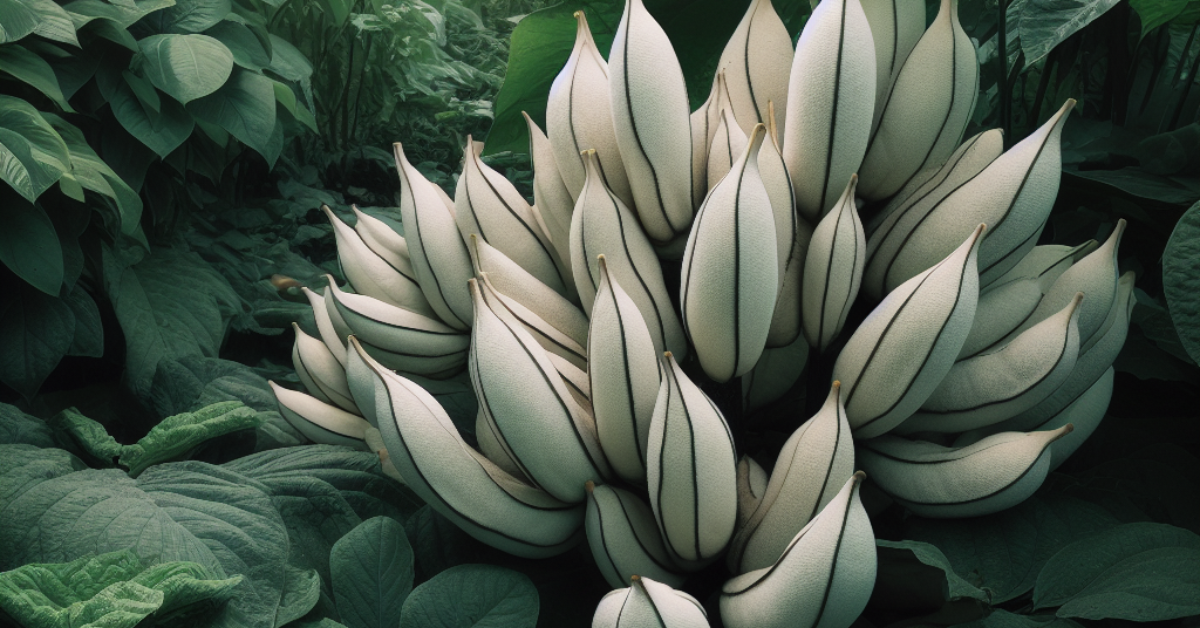If you’re looking to add a touch of the exotic to your garden and enjoy a unique, sweet treat, the Ice Cream Bean (Inga edulis) is the perfect choice. Native to South and Central America, this tropical tree not only provides lush greenery but also boasts sweet, creamy pods that taste like vanilla ice cream. In this OrganicMotion article, we’ll guide you through the process of growing Ice Cream Bean in Eastern Australia, from planting to indulging in its delicious pods.
About the Ice Cream Bean Tree
Botanical Overview: Ice Cream Bean, also known as ‘Guaba’ or ‘Pacay,’ is a tree belonging to the Inga genus, part of the Fabaceae family. It’s a fast-growing, nitrogen-fixing tree that can reach up to 20 meters in height.
Climate Requirements: Ice Cream Bean thrives in tropical and subtropical climates. In Eastern Australia, it’s best suited to regions where frost is rare, such as coastal areas in Queensland and northern New South Wales.
Planting Schedule in Eastern Australia
- Spring (September – November): Spring is the ideal time to plant Ice Cream Bean seeds. It allows the young trees to establish their root systems before the heat of summer.
- Site Selection: Choose a location with well-drained soil that receives full sun or partial shade. Ensure there’s enough space for the tree to grow comfortably.
- Seed Preparation: Soak the seeds for 24 hours to soften the outer shell, which aids in germination. In regions where you can grow Ice Cream Bean outdoors year-round, plant the seeds directly in the soil, about 5 cm deep. Space multiple seeds at least 3 meters apart to allow for proper growth.
- Container Planting: If your area experiences occasional frost or cold winters, consider growing your Ice Cream Bean in a large container. Start in spring, then transplant to the ground once the risk of frost has passed.
- Watering: Keep the soil consistently moist but not waterlogged. These trees enjoy regular watering, especially during dry spells.
- Mulching: Apply a thick layer of organic mulch to conserve soil moisture and suppress weeds.
- Support and Pruning: Ice Cream Bean trees may need staking to prevent them from toppling during heavy winds. Prune as needed to maintain the desired shape and size.
- Fertilization: While Ice Cream Bean trees are nitrogen-fixing and require little additional fertilization, a yearly application of balanced fertilizer during the growing season can be beneficial.
Caring for Your Ice Cream Bean Tree
- Ensure adequate watering during dry periods.
- Protect young trees from frost with frost cloth or by bringing container-grown trees indoors during cold snaps.
- Be cautious about over-pruning, as it may reduce fruit production.
Harvesting and Enjoying
Ice Cream Bean trees usually start bearing fruit within 3-5 years. Pods will appear in late summer and continue through autumn. You can harvest them by hand when they are plump, green, and slightly soft.
To enjoy this tropical delight, simply open the pod and scoop out the soft, white pulp. It tastes like a sweet blend of vanilla ice cream and cotton candy. You can also blend the pulp into smoothies or use it to make a unique, creamy ice cream.
Recipe: Ice Cream Bean Smoothie
Ingredients:
- 1 cup of Ice Cream Bean pulp
- 1 ripe banana
- 1 cup of coconut milk
- 1 tablespoon of honey (optional)
- Ice cubes
Instructions:
- Combine the Ice Cream Bean pulp, ripe banana, coconut milk, and honey (if desired) in a blender.
- Add ice cubes for a chilled smoothie.
- Blend until smooth and creamy.
- Pour into a glass and enjoy this tropical, naturally sweet treat!
Taste of the tropics
Growing and enjoying Ice Cream Bean in Eastern Australia is a delightful experience that brings a taste of the tropics to your garden. With the right care and patience, you’ll be rewarded with sweet, creamy pods that will make your taste buds dance. So why not plant an Ice Cream Bean tree and indulge in a unique, natural dessert right from your backyard?
